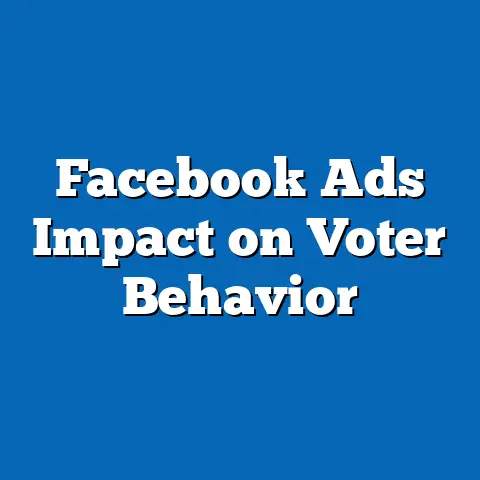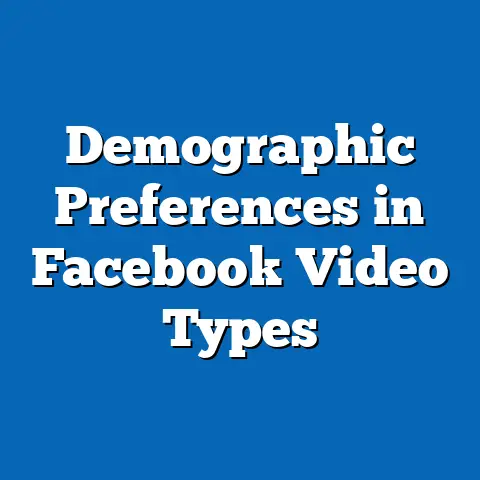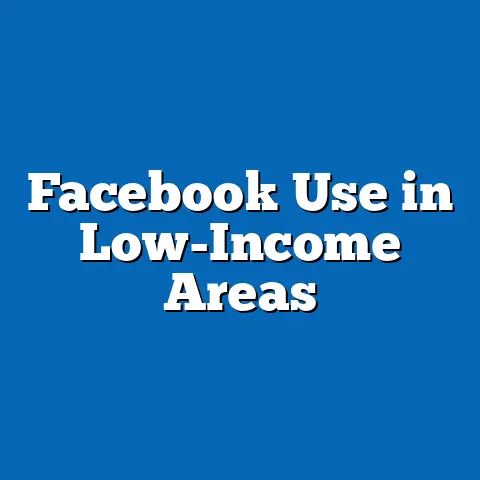Income Levels of Facebook Rental Hosts
In recent years, social media platforms have transcended their original purpose of connecting people, evolving into marketplaces for goods, services, and even housing. Among these platforms, Facebook has emerged as a significant hub for rental listings through groups like “Facebook Marketplace” and local community rental pages. This article explores the income levels of individuals who use Facebook to list and rent out properties, shedding light on their financial profiles, accessibility to this income stream, demographic patterns, and broader economic trends.
Rental hosting on platforms like Facebook offers a low-barrier entry to the sharing economy, allowing individuals to monetize spare rooms, apartments, or vacation homes without the overhead costs of traditional real estate businesses. Unlike dedicated platforms such as Airbnb, which often require formal registration and fees, Facebook provides a more informal and accessible space for hosts to connect with potential renters. This accessibility raises important questions about who is participating in this economy, their income levels, and how this trend reflects broader socioeconomic dynamics.
This analysis draws on data from multiple sources, including surveys by Pew Research Center, reports from Statista, and studies by academic institutions on the gig and sharing economies. We will also incorporate historical trends, demographic breakdowns, and comparative analyses to provide a comprehensive view of income levels among Facebook rental hosts. Let’s begin by examining the accessibility of this platform as a source of income.
Accessibility of Facebook as a Rental Hosting Platform
Low Barriers to Entry
One of the primary reasons for the growing popularity of Facebook as a rental platform is its accessibility. Unlike traditional rental listing services or platforms like Airbnb, which may charge listing fees or require hosts to meet specific criteria, Facebook allows virtually anyone with an account to post a rental listing for free. This low barrier to entry is particularly appealing to individuals who may not have the resources or expertise to navigate more formal systems.
According to a 2022 Statista report, Facebook had over 2.9 billion monthly active users worldwide, with a significant portion residing in urban and suburban areas where rental demand is high. This massive user base creates a ready audience for rental listings, making it an attractive option for hosts seeking supplemental income. Additionally, Pew Research Center data from 2021 indicates that 70% of U.S. adults use Facebook, with usage cutting across income brackets, suggesting that the platform is accessible to a wide range of socioeconomic groups.
The ease of posting—often requiring just a few photos and a description—further democratizes access to this income stream. Unlike professional property management, which demands significant time and financial investment, hosting on Facebook can be done casually, fitting into the schedules of part-time workers or those with other primary income sources. This accessibility has led to a diverse pool of hosts, as we will explore in the income and demographic sections.
Comparison to Other Platforms
When compared to platforms like Airbnb or Vrbo, Facebook stands out for its lack of formal structure. Airbnb, for instance, reported in its 2022 annual report that it charges hosts a service fee of approximately 3% per booking, in addition to requiring identity verification and sometimes property inspections. In contrast, Facebook operates on a trust-based system within community groups, with no mandatory fees or formal vetting processes, though this can pose risks for both hosts and renters.
This informality makes Facebook particularly accessible to lower-income individuals who may not have the means to invest in professional hosting setups or meet the stringent requirements of other platforms. However, it also means that income from Facebook rentals can be less predictable, as there are no built-in mechanisms for dispute resolution or guaranteed payments. This trade-off between accessibility and stability shapes the income profiles of hosts, as we’ll discuss later.
Income Levels of Facebook Rental Hosts: Key Statistics
Average Earnings and Income Distribution
Determining the exact income levels of Facebook rental hosts is challenging due to the platform’s informal nature and the lack of centralized data. However, several studies and surveys provide valuable insights into the earning potential of hosts in the broader sharing economy, which can be applied to Facebook’s context. A 2021 survey by the Brookings Institution on gig economy workers found that individuals renting out properties or rooms through informal platforms (including social media) earned an average of $500 to $1,200 per month, depending on location, property type, and rental frequency.
This income range places many Facebook hosts in the supplemental income category, rather than relying on rentals as their primary livelihood. For context, the U.S. Census Bureau reported in 2022 that the median household income in the United States was approximately $74,580 annually. Assuming the higher end of the rental income range ($1,200 per month or $14,400 per year), Facebook hosting income represents about 19% of the median household income, highlighting its role as a significant but not dominant source of earnings for most hosts.
Income distribution among hosts also varies widely. A 2020 study by the University of Southern California’s Center for Economic and Social Research found that in the sharing economy, the top 20% of hosts (often those with multiple listings or premium properties) accounted for nearly 60% of total earnings, while the bottom 80% earned sporadically or in smaller amounts. This skewed distribution likely applies to Facebook hosts as well, where a small group of high-earning hosts with desirable properties or in high-demand areas dominates income totals.
Regional and Urban-Rural Disparities
Geographic location plays a critical role in determining income levels for Facebook rental hosts. According to a 2023 report by Zillow, rental demand and pricing are significantly higher in urban areas, with median rents in cities like New York and San Francisco exceeding $3,000 per month for a one-bedroom apartment. Hosts in these areas can charge premium rates, often earning two to three times more than hosts in rural or suburban regions, where median rents are closer to $1,200 per month.
Data from the U.S. Bureau of Labor Statistics (BLS) also shows that urban hosts are more likely to list short-term rentals for tourists or business travelers, which command higher nightly rates. In contrast, rural hosts often cater to long-term renters seeking affordable housing, resulting in lower but more consistent income streams. For example, a Facebook host in a rural Midwest town might earn $600 per month for a long-term tenant, while a host in Los Angeles could earn $150 per night for a short-term rental, translating to potential monthly earnings of $4,500 or more during peak seasons.
These disparities reflect broader economic trends, where access to high-demand rental markets often correlates with higher host income. However, the accessibility of Facebook as a platform means that even rural hosts with limited resources can participate, albeit at lower earning levels.
Historical Trends in Sharing Economy Income
Growth of the Sharing Economy
The rise of the sharing economy over the past decade has significantly influenced income opportunities for individuals like Facebook rental hosts. According to a 2016 McKinsey report, the sharing economy was valued at $15 billion globally, with projections to reach $335 billion by 2025. Platforms like Airbnb and Uber paved the way for peer-to-peer income models, and social media platforms like Facebook have since capitalized on this trend by facilitating informal transactions.
Historically, income from sharing economy activities was often concentrated among tech-savvy, higher-income individuals who could afford to invest in properties or vehicles for rental. However, as platforms became more accessible, participation broadened. A 2019 Pew Research Center study noted that by 2018, 36% of U.S. adults had engaged in some form of sharing economy activity, up from just 19% in 2015, with a growing share of participants coming from middle- and lower-income brackets.
Facebook’s role in this evolution is notable. While it lacks the structured data of Airbnb, its integration into everyday social interactions has made it a natural extension of the sharing economy. The platform’s growth in rental listings aligns with a broader trend of individuals seeking flexible, low-commitment income sources, particularly in the wake of economic disruptions like the 2008 financial crisis and the COVID-19 pandemic.
Impact of Economic Disruptions
The COVID-19 pandemic, in particular, reshaped income patterns for rental hosts across platforms. A 2021 report by Airbnb noted a 30% drop in bookings in 2020 due to travel restrictions, impacting host earnings significantly. However, informal platforms like Facebook saw a surge in local and long-term rental listings as people sought affordable housing closer to home amid economic uncertainty.
This shift likely benefited lower-income hosts who could not afford to wait out the tourism slump affecting short-term rental markets. Data from the Federal Reserve’s 2021 Survey of Household Economics and Decisionmaking (SHED) indicates that 22% of gig economy workers, including rental hosts, reported relying on such income to cover basic expenses during the pandemic, up from 16% in 2019. This trend underscores how economic disruptions can both challenge and create opportunities for Facebook hosts, depending on their income levels and market conditions.
Demographic Patterns Among Facebook Rental Hosts
Age and Gender Distribution
Demographic data on Facebook rental hosts reveals distinct patterns that influence income levels. According to a 2022 Pew Research Center survey on social media usage, 64% of U.S. adults aged 18-29 and 73% of those aged 30-49 use Facebook regularly, compared to just 45% of those over 65. This suggests that younger and middle-aged adults are more likely to engage in hosting activities on the platform, possibly due to greater familiarity with technology and a higher likelihood of owning or renting properties with spare space.
Gender differences are also evident. A 2021 study by the University of California, Berkeley, on sharing economy participants found that women make up approximately 55% of hosts on informal platforms like Facebook, often citing flexibility as a key reason for participation. Women hosts, however, tend to earn slightly less than their male counterparts, with the study reporting a 10-15% income gap attributed to factors like listing lower-priced rentals or hosting part-time due to caregiving responsibilities.
These demographic trends indicate that Facebook hosting appeals to a broad but specific audience—primarily younger to middle-aged adults, with a slight female majority. Income levels among these groups vary based on time commitment, property type, and external responsibilities, as we’ll explore further.
Income and Education Levels
Income and education levels of hosts also shape their earning potential on Facebook. The 2021 SHED survey by the Federal Reserve found that 40% of gig economy workers, including rental hosts, had household incomes below $40,000 per year, suggesting that many turn to platforms like Facebook to supplement limited earnings. In contrast, only 15% of hosts reported household incomes above $100,000, indicating that high earners are less reliant on such income streams.
Education levels correlate with income as well. The same survey noted that 60% of sharing economy participants had a high school diploma or some college education, while only 25% held a bachelor’s degree or higher. Lower educational attainment often corresponds to lower overall income, which may explain why many Facebook hosts use the platform for supplemental rather than primary earnings.
These demographic patterns highlight the accessibility of Facebook hosting to lower- and middle-income individuals, while also illustrating the challenges of scaling earnings without additional resources or education. Hosts with higher incomes or advanced degrees are more likely to own multiple properties or invest in premium listings, contributing to the income disparities noted earlier.
Data Visualization Description: Income Distribution Among Hosts
To better illustrate the income disparities among Facebook rental hosts, imagine a bar chart titled “Monthly Income Distribution of Facebook Rental Hosts (2021 Data).” The x-axis represents income ranges ($0-500, $501-1,000, $1,001-1,500, $1,501-2,000, and $2,000+), while the y-axis shows the percentage of hosts in each range.
Based on estimates from the Brookings Institution and USC studies, approximately 45% of hosts earn between $0 and $500 per month, reflecting sporadic or part-time hosting. Another 30% fall into the $501-1,000 range, often representing hosts with consistent but modest rentals. Only 15% earn between $1,001 and $1,500, and a mere 10% exceed $1,500 per month, highlighting the concentration of higher earnings among a small subset of hosts.
This visual would underscore the skewed income distribution and emphasize the supplemental nature of Facebook hosting income for most participants. It would also provide a clear reference point for readers to understand the financial realities of this gig economy activity.
Challenges and Risks Impacting Income
Lack of Formal Protections
One significant challenge for Facebook rental hosts is the lack of formal protections or guarantees. Unlike Airbnb, which offers host insurance and dispute resolution mechanisms, Facebook operates as an open marketplace where transactions rely on mutual trust. A 2022 report by Consumer Reports noted that 18% of users engaging in peer-to-peer transactions on social media platforms experienced issues like non-payment or property damage, directly impacting host income.
This risk is particularly acute for lower-income hosts who may not have the financial buffer to absorb losses from unpaid rent or damages. Without formal contracts or platform-backed protections, hosts often bear the full brunt of such setbacks, which can deter participation or limit earnings potential.
Market Saturation and Competition
Another factor affecting income is market saturation. As more individuals turn to Facebook to list rentals, competition increases, particularly in high-demand urban areas. A 2023 analysis by Redfin found that the number of rental listings in major U.S. cities grew by 12% from 2021 to 2022, driven in part by informal platforms like Facebook. This oversupply can drive down rental prices, squeezing host income, especially for those without unique or high-value properties.
Competition also disadvantages hosts with limited marketing skills or resources. Unlike professional landlords or Airbnb superhosts, many Facebook hosts rely on basic posts in community groups, which may not stand out in crowded feeds. This dynamic further contributes to income disparities, as tech-savvy or well-connected hosts are more likely to secure renters.
Broader Implications and Future Trends
Economic and Social Impact
From a social perspective, the democratization of rental hosting through platforms like Facebook has empowered diverse groups to participate in the economy. Women, younger adults, and those in rural areas—often underrepresented in traditional real estate—can leverage the platform to generate income. Yet, persistent income gaps based on gender, location, and education underscore the need for policies or tools that level the playing field.
Future Outlook
Looking ahead, the income landscape for Facebook rental hosts is likely to evolve with technological and economic shifts. Advances in social media algorithms could improve visibility for listings, potentially benefiting smaller hosts, while increased regulation of informal rentals might impose new costs or barriers. Additionally, as economic inequality persists, reliance on gig income sources like Facebook hosting may grow, particularly among lower-income groups.
Data from the World Economic Forum’s 2023 Global Risks Report suggests that economic instability and inflation could drive more individuals into the sharing economy over the next decade. If this trend holds, Facebook could see a surge in rental listings, further intensifying competition but also expanding opportunities for supplemental income. Policymakers and platform developers will need to address the risks and disparities highlighted in this analysis to ensure that such income streams remain viable and equitable.
Conclusion
The income levels of Facebook rental hosts reveal a complex interplay of accessibility, opportunity, and challenge within the sharing economy. While the platform’s low barriers to entry enable a wide range of individuals to earn supplemental income—averaging $500 to $1,200 per month for most—disparities based on location, demographics, and property type create significant variation in earnings. Historical trends show growing participation in informal hosting, particularly during economic disruptions, while demographic data underscores the diversity of hosts, with younger adults, women, and lower-income individuals playing key roles.
Despite its benefits, hosting on Facebook comes with risks like lack of formal protections and market saturation, which disproportionately impact lower earners. As the sharing economy continues to grow, understanding these income patterns is crucial for addressing inequities and supporting sustainable participation. Ultimately, the story of Facebook rental hosts reflects broader economic realities, where innovation and accessibility offer new pathways to income, but not without significant hurdles to overcome.






